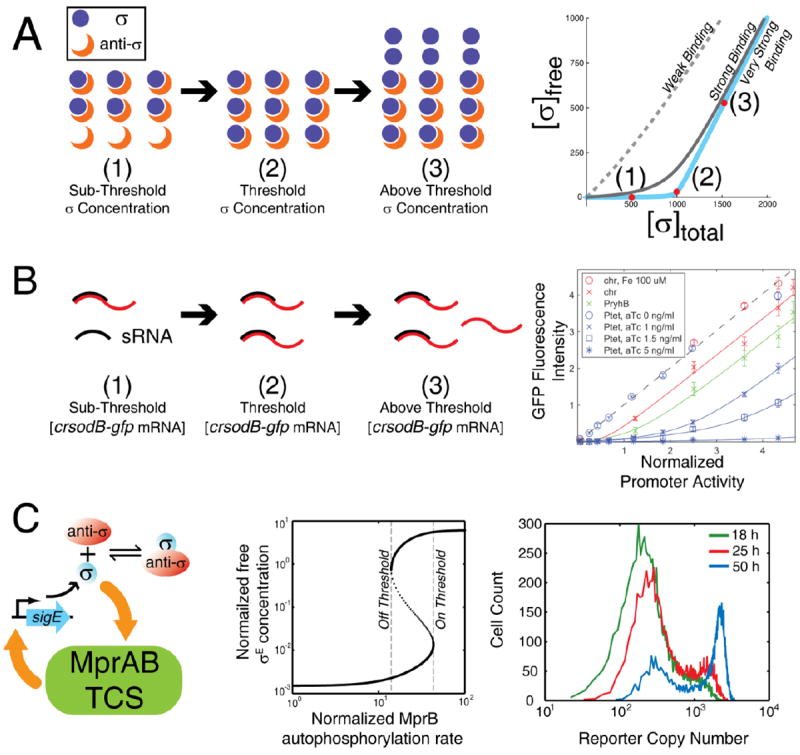Figure 2.

Saturation creates an ultrasensitive switch. A. As total sigma factor concentration increases, anti-σ sequesters it until the critical point is reached, determined by the concentration of anti- σ and the affinity of the σ -anti- σ interaction. The resulting quantitative effect is a titration curve for free σ that crosses a steep transition into the range where the sigma factor has high concentrations. Comparing responses for different binding affiinities shows that strong binding is necessary for the effect. B. An analogous threshold arises when a small RNA (sRNA) prevents translation. After mRNA concentration exceeds a threshold determined by sRNA concentration (due to sufficient stress signals level), translation of unsequestered mRNA proceeds. Points in the graph represent experimental data from expressing GFP fused with the crsodB sRNA recognition sequence in the 5’-UTR under various sRNA induction conditions; solid curves are model predictions26. Each line corresponds to a different sRNA concentration. C. In Mycobacterium tuberculosis, σE upregulates MprAB, a two-component system (TCS) that regulates stress responses. Positive feedback from the TCS combined with an ultrasensitive σ-anti-σ interaction enables a bistable signal-response from MprAB with two ultrasensitive thresholds as demonstrated by signal-response curve(middle panel). Right panel shows that simulated single cell distributions of σE activity reporter are bimodal with a growing fraction of cells inducing σE after stress intiation. [Graph in part B copied directly from Levine et al 2007.]
